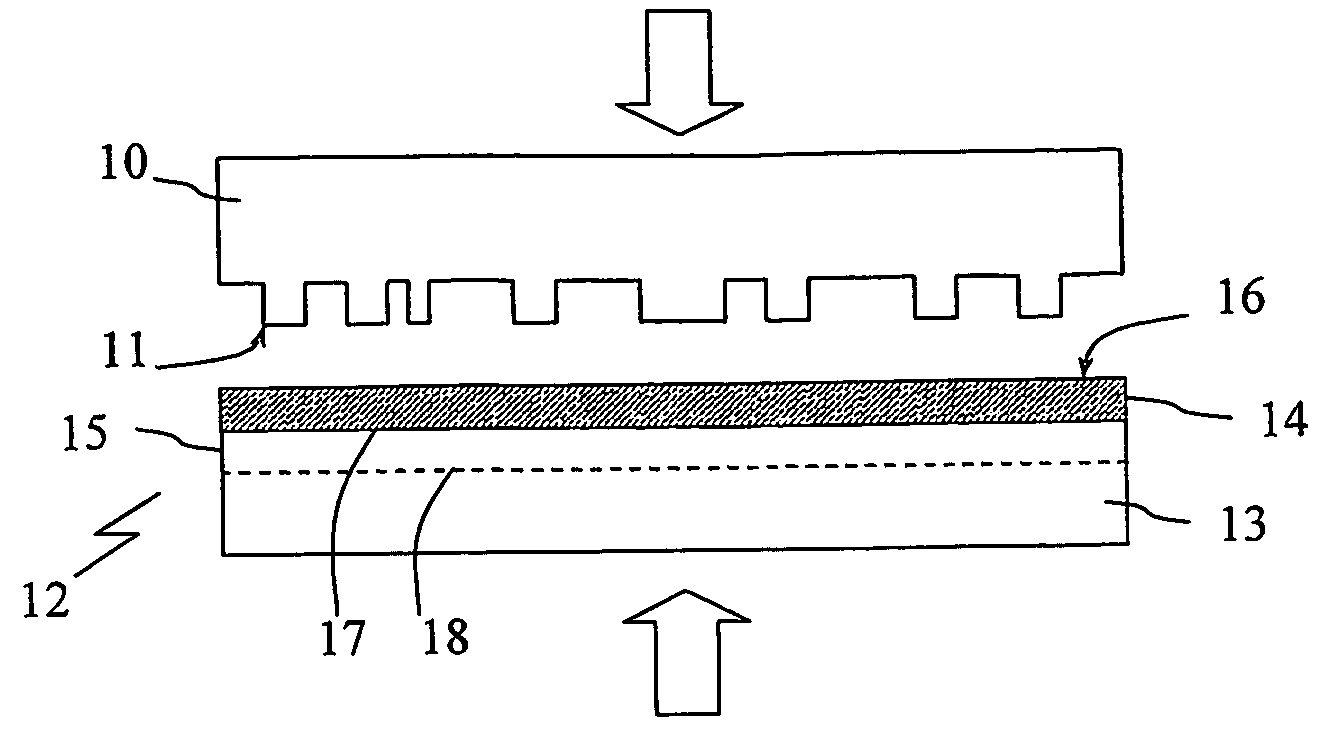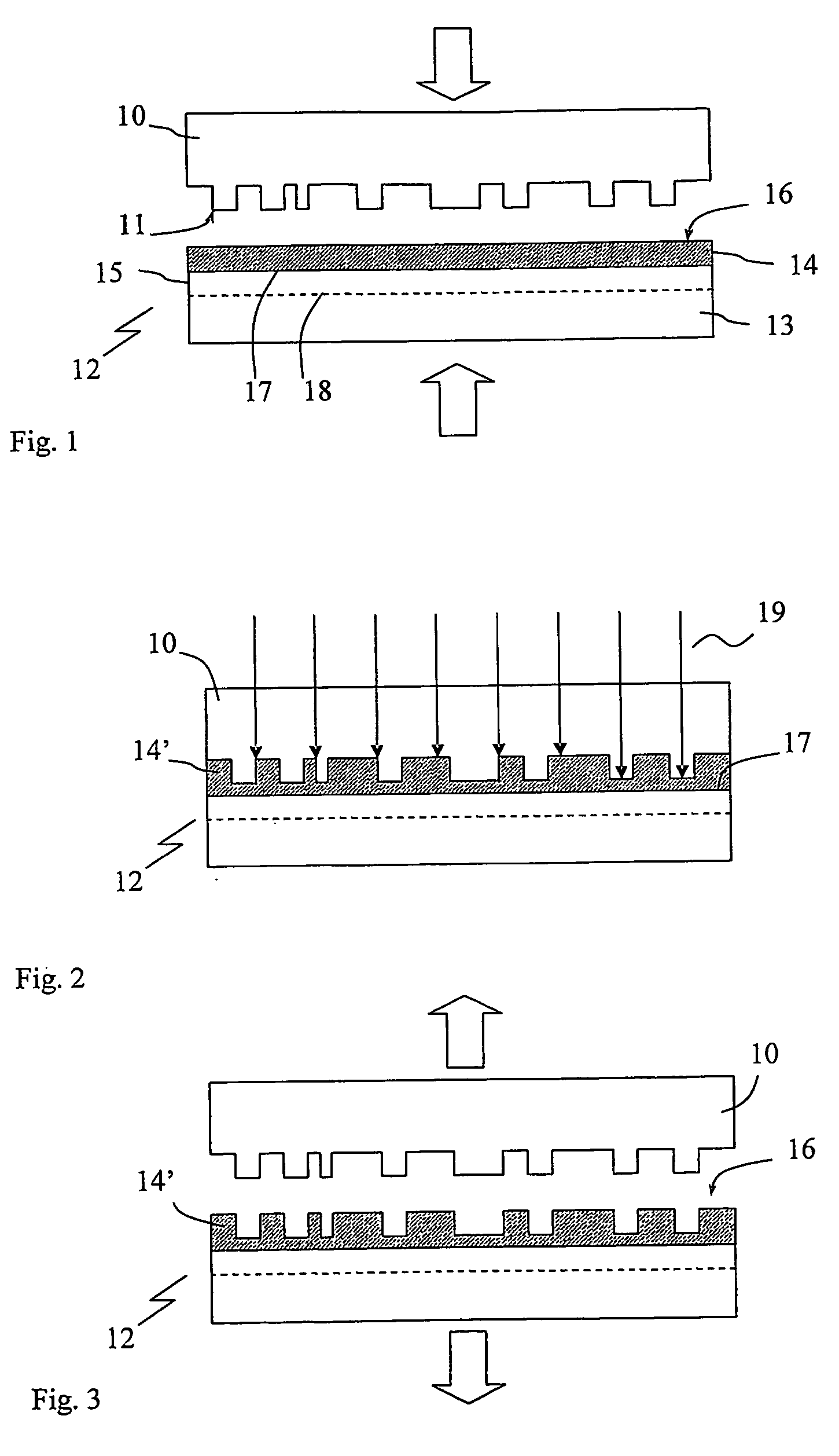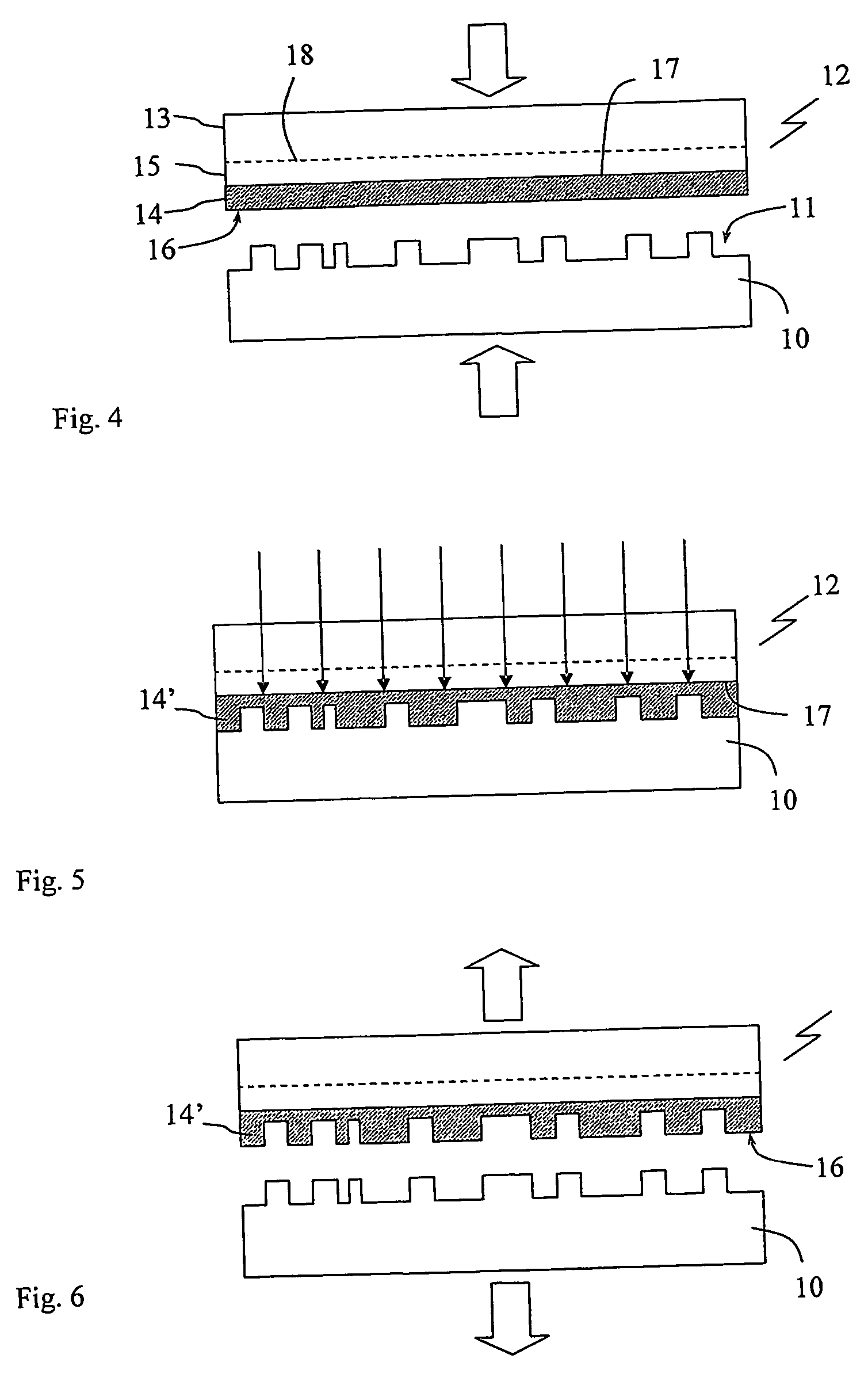Device and method for large area lithography
a large area, lithography technology, applied in the field of large area lithography, can solve the problems of inability to handle large area substrate surfaces in a single imprint step, limited photolithography by diffraction, and difficult imprint process for larger surface areas, so as to improve the fabrication of structures
- Summary
- Abstract
- Description
- Claims
- Application Information
AI Technical Summary
Benefits of technology
Problems solved by technology
Method used
Image
Examples
Embodiment Construction
[0055] The present invention relates, in general, to a method of transferring a pattern from a template to a substrate, by creating a relief image of a structure on a surface of the template on a surface of the substrate. The surface of the template and the surface of the substrate are in this process arranged generally parallel to each other, and the transfer of the pattern is obtained by pressing the structured template surface into a formable layer disposed on the substrate surface. The formable layer is treated to solidify, such that its shape is forced to resemble the template surface. The template can thereafter be removed from the substrate and its layer, said layer now being an inverted topographical replica of the template. In order to permanent the transferred pattern in the substrate, further processing may be required. Typically, wet or dry etching is performed to selectively etch the surface of the substrate under the solidified layer, whereby the pattern in the solidif...
PUM
| Property | Measurement | Unit |
|---|---|---|
| pressure | aaaaa | aaaaa |
| wavelength range | aaaaa | aaaaa |
| width | aaaaa | aaaaa |
Abstract
Description
Claims
Application Information
 Login to View More
Login to View More - R&D
- Intellectual Property
- Life Sciences
- Materials
- Tech Scout
- Unparalleled Data Quality
- Higher Quality Content
- 60% Fewer Hallucinations
Browse by: Latest US Patents, China's latest patents, Technical Efficacy Thesaurus, Application Domain, Technology Topic, Popular Technical Reports.
© 2025 PatSnap. All rights reserved.Legal|Privacy policy|Modern Slavery Act Transparency Statement|Sitemap|About US| Contact US: help@patsnap.com



